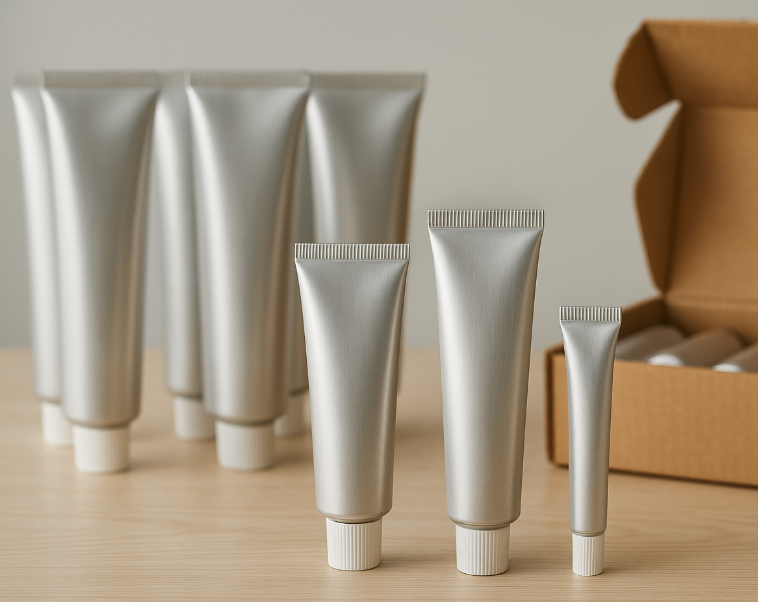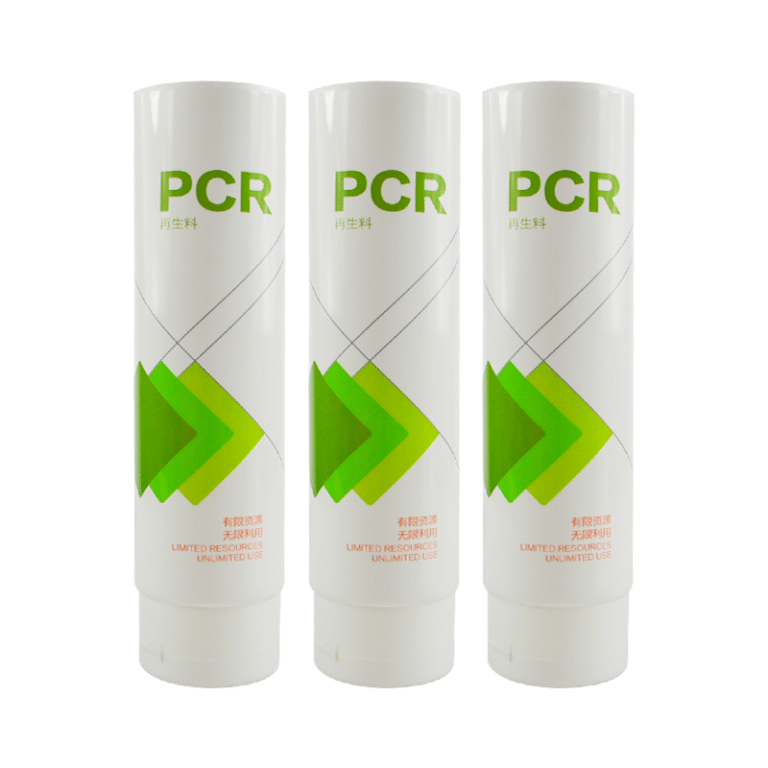What Are the Different Types of Tube Packaging? A Complete Guide
Cosmetic Tube packaging is one of the most practical and versatile solutions in the world of product presentation and storage. From toothpaste and face creams to gourmet sauces and industrial adhesives, tubes are used to contain, protect, and dispense products in a safe, convenient way. But while we all interact with tube packaging almost daily, few stop to consider the variety of materials, designs, and applications that exist within this category.
In simple terms, tube packaging refers to a cylindrical or semi-cylindrical container that typically has one sealed end and one dispensing end, which can be resealed after use. This packaging form is appreciated because it allows consumers to control the amount of product they use, minimizes contamination risks, and offers brands a highly customizable surface for designs and labels.
Historically, Cosmetic tubes first gained popularity in the late 19th and early 20th centuries when aluminum tubes became a revolutionary solution for storing paints, ointments, and even food pastes. Over time, the industry expanded to include plastic tubes, laminated tubes, paperboard tubes, and more, each serving specific needs in various markets.
The modern packaging industry has evolved significantly, and today’s tube packaging solutions can be tailored based on material type, shape, function, and sustainability goals. Businesses can opt for tubes that provide high-barrier protection for sensitive formulas, tubes that stand out visually on store shelves, or eco-friendly tubes that align with green brand values.

Importance of Tube Packaging in Modern Beauty Industries
The rise of tube packaging in multiple industries is no accident. Several factors make it a preferred choice over jars, bottles, or pouches.
1. Consumer Convenience
Consumers want easy-to-use packaging, and tubes deliver just that. With a gentle squeeze, they can control the amount of product dispensed. The resealable cap ensures freshness and prevents spills, making it ideal for both at-home and on-the-go use.
2. Product Protection
Tube packaging can be designed with materials that offer excellent barrier properties against light, air, and moisture. This is particularly important for products with sensitive formulations, such as certain cosmetics, pharmaceuticals, or food items.
3. Hygiene and Safety
Unlike jars, where users must dip their fingers in, tube packaging allows for no-contact dispensing. This greatly reduces the risk of bacterial contamination and maintains product integrity for longer.
4. Branding and Shelf Appeal
A cosmetic tube’s cylindrical surface provides ample space for eye-catching graphics, brand logos, and essential product information. With offset printing, hot stamping, and digital printing technologies, brands can create visually appealing designs that enhance their market presence.
5. Versatility Across Industries
Tube packaging is not limited to one sector. It is used in:
- Cosmetics: lotions, scrubs, masks, hair creams.
- Pharmaceuticals: ointments, gels, medicated creams.
- Food: mayonnaise, honey, chocolate spreads.
- Industrial: adhesives, sealants, lubricants.
6. Sustainability and Innovation
With growing environmental concerns, tube manufacturers are innovating with recyclable plastics, biodegradable options, and refillable designs. This allows brands to appeal to eco-conscious customers while reducing their environmental footprint.
Classification of Tube Packaging by Material
When we talk about the different types of tube packaging, the material is often the first classification point. Each material type offers unique benefits, limitations, and best-use cases, so understanding these differences is critical for making an informed choice.
Plastic Tubes
Plastic tubes dominate the consumer goods market because they are lightweight, flexible, cost-effective, and suitable for mass production. Common plastics used include Polyethylene (PE) and Polypropylene (PP).
Advantages:
- Cost-effective for high-volume production.
- Excellent flexibility and squeeze recovery.
- Can be transparent, opaque, or colored for branding.
- Compatible with advanced printing techniques.
Limitations:
- May not offer the same oxygen and moisture barrier as aluminum.
- Environmental concerns if not recyclable.
Common Uses:
- Skincare creams, gels, hair conditioners, toothpaste, and household cleaners.
Manufacturing Insight:
High-Density Polyethylene (HDPE) is often used for greater rigidity, while Low-Density Polyethylene (LDPE) offers superior flexibility. Multi-layer plastic tubes can incorporate EVOH (Ethylene Vinyl Alcohol) to enhance barrier properties.

Aluminum Tubes
Aluminum tubes are a classic choice when product protection is paramount. They offer a near-total barrier against light, oxygen, and moisture, which helps extend the shelf life of sensitive products.
Advantages:
- 100% recyclable without quality loss.
- Excellent barrier properties.
- Strong and puncture-resistant.
- Ideal for sterile or sensitive formulas.
Limitations:
- Can dent easily if mishandled.
- Slightly higher manufacturing cost compared to plastics.
Common Uses:
- Pharmaceutical ointments, adhesives, specialty paints, artist oil paints, and gourmet food pastes like tomato concentrate.
Interesting Fact:
Aluminum tubes are crimped at one end after filling, creating a tamper-evident seal that reassures customers of product integrity.
Laminated Tubes

Laminated tubes combine layers of different materials — often plastic and aluminum — to achieve a balance between flexibility, barrier protection, and cost-effectiveness. They come in two types: ABL (Aluminum Barrier Laminate) and PBL (Plastic Barrier Laminate).
Advantages:
- Strong product protection similar to aluminum.
- Retains flexibility like plastic.
- Smooth, premium printing surface.
- Can be translucent or opaque.
Limitations:
- More complex recycling process.
- Slightly higher cost than pure plastic tubes.
Common Uses:
- Toothpaste, medicinal creams, sunscreen lotions, and premium cosmetics.
Paperboard Tubes
Paperboard tubes, also known as composite tubes, are an eco-friendly alternative gaining popularity in the sustainable packaging movement.
Advantages:
- Made from renewable and recyclable materials.
- Can be biodegradable.
- Offers a rustic, organic look for eco-conscious branding.
Limitations:
- Not suitable for all liquid or highly perishable products unless lined.
- Can be more expensive for small runs.
Common Uses:
- Lip balms, deodorants, dry powders, confectionery, and promotional packaging.
Sustainability Angle:
Many brands use FSC-certified paperboard to ensure materials are sourced responsibly.
Tube Packaging by Shape and Design
Beyond materials, tube packaging can be classified by shape and design, which greatly affects usability, branding, and shelf appeal.
Round Tubes
Round tubes are the industry standard and are widely used because they are easy to manufacture, fill, and store.
Advantages:
- Familiar and ergonomic for consumers.
- Easy to label and print on.
- Cost-efficient in high volumes.
Common Uses:
- Toothpaste, gels, creams, and ointments.
Oval Tubes
Oval tubes offer a sleek, modern aesthetic that sets products apart on shelves.
Advantages:
- Premium look and feel.
- More comfortable grip for some applications.
- Wider face area for branding.
Common Uses:
- Luxury skincare, sunblock lotions, high-end hair care.
Custom-Shape Tubes
Custom-shaped tubes allow brands to create distinctive packaging tailored to their identity.
Advantages:
- Unique, memorable branding.
- Can be functional (e.g., angled tips for precise application).
- Encourages consumer engagement.
Common Uses:
- Specialty cosmetics, children’s products, limited-edition items.
Tube Packaging by Application
Applications often dictate which tube type is best, especially in industries where product safety, shelf life, and consumer experience are key.
Cosmetic Tube Packaging
Used for creams, lotions, scrubs, masks, foundations, and serums. Often emphasizes aesthetics with metallic finishes, gradient printing, and custom caps.
Pharmaceutical Tube Packaging
Focused on sterility, barrier protection, and dosage control. Commonly used for ointments, gels, and topical medications.
Food & Beverage Tube Packaging
Must be food-safe and often heat-sealed for tamper evidence. Used for condiments, icing gels, honey, and specialty sauces.
Industrial Tube Packaging
Requires rugged durability and chemical resistance. Used for adhesives, sealants, greases, and lubricants.
Sustainable Tube Packaging Options
With growing consumer awareness about environmental impact, brands are under pressure to adopt eco-friendly packaging solutions. Tube packaging has responded to this demand with a variety of sustainable innovations.
Recyclable Materials
Many modern tubes are made from mono-material plastics like HDPE or PP, which can be recycled in standard municipal systems. By eliminating mixed-material layers, these tubes simplify the recycling process and reduce contamination risks.
Benefits:
- Reduces landfill waste.
- Appeals to eco-conscious customers.
- Meets regulatory requirements in many countries.
Examples:
- Toothpaste brands switching from laminated tubes to fully recyclable plastic tubes.
- Personal care products using transparent PP tubes with minimal printing for better recyclability.
Biodegradable Tubes
Biodegradable tubes break down naturally under certain conditions, often made from plant-based plastics such as PLA (Polylactic Acid) or coated paperboard.
Benefits:
- Reduces long-term environmental impact.
- Made from renewable resources.
- Ideal for brands positioning themselves as eco-pioneers.
Limitations:
- Requires specific composting conditions to degrade effectively.
- Higher cost than standard tubes.
Refillable and Reusable Tubes
Refillable tube systems allow consumers to purchase product refills instead of replacing the entire container. These tubes are usually made from durable materials designed for multiple uses.
Benefits:
- Significantly reduces packaging waste.
- Encourages brand loyalty.
- Ideal for premium products where consumers expect long-term use.
Examples:
- Luxury skincare companies offering refillable face cream tubes.
- Specialty toothpaste brands selling concentrated refills.
Factors to Consider When Choosing Tube Packaging
Selecting the right tube packaging goes beyond aesthetics — it directly impacts product safety, usability, and brand success.
Product Compatibility
The tube’s material must be chemically compatible with the product. For instance:
- Acidic or reactive formulas may corrode aluminum unless coated.
- Oily or solvent-based products may require high-barrier laminates.
Branding and Design Needs
Your packaging is your silent salesperson. Consider:
- Color psychology for emotional appeal.
- Finish options like matte, gloss, or metallic.
- Printing methods for logos, ingredients, and regulatory info.
Budget and Production Costs
Cost efficiency is essential, especially for mass-market products.
- Plastic tubes are generally cheaper than aluminum or laminated options.
- Custom shapes or specialty printing increase costs but can boost shelf appeal.
Emerging Trends in Tube Packaging
The tube packaging industry is rapidly evolving with technological and design innovations:
- Digital printing enables short-run, high-quality custom designs.
- Smart packaging with QR codes provides product details, tutorials, or brand stories.
- Lightweighting reduces material usage without sacrificing strength.
- Hybrid tubes combine materials for functionality and eco-benefits.
Common Mistakes to Avoid in Tube Packaging Selection
- Overlooking material compatibility — can lead to leaks or product degradation.
- Ignoring user convenience — hard-to-open caps frustrate consumers.
- Neglecting regulations — especially for food and pharma products.
FAQs
1. What is the most common material for tube packaging?
Plastic, especially polyethylene (PE) and polypropylene (PP), due to cost-effectiveness and versatility.
2. Can tube packaging be eco-friendly?
Yes, options include recyclable mono-material tubes, biodegradable plant-based tubes, and refillable systems.
3. Why use laminated tubes?
They combine flexibility with high barrier protection, making them ideal for sensitive formulas.
4. Are aluminum tubes safe for food?
Yes, when coated with a food-safe lining.
5. How do I choose the right tube size?
Base it on product volume, shelf space, and dispensing requirements.
6. Can tube packaging be fully customized?
Absolutely — in shape, material, printing, and cap design.
Conclusion
Tube packaging is more than just a container — it’s a functional, branding, and sustainability tool. By understanding the different types of tube packaging, from classic plastic and aluminum to innovative eco-friendly options, businesses can select solutions that align with their product requirements, market positioning, and environmental commitments.
Tube Packaging Comparison Table
| Tube Type | Material Composition | Advantages | Limitations | Best Uses |
|---|---|---|---|---|
| Plastic Tubes | PE, PP, or multi-layer plastic | Lightweight, cost-effective, flexible, printable | Lower barrier protection than aluminum, environmental concerns if not recycled | Cosmetics, toothpaste, hair care, household cleaners |
| Aluminum Tubes | Pure aluminum, coated interior | Excellent barrier protection, recyclable, durable | Higher cost, can dent easily | Pharmaceutical ointments, adhesives, food pastes |
| Laminated Tubes (ABL/PBL) | Multi-layer plastic & aluminum | Combines flexibility with strong barrier, premium printing | Complex recycling, slightly higher cost | Toothpaste, medicinal creams, sunscreen |
| Paperboard Tubes | FSC-certified paper, sometimes lined | Eco-friendly, recyclable, biodegradable, premium look | Limited for liquids unless lined, higher cost for small runs | Lip balms, deodorants, powders, confectionery |
| Round Tubes | Any material in cylindrical form | Familiar design, easy to label, cost-effective | Common look (less differentiation) | Toothpaste, gels, creams |
| Oval Tubes | Plastic or laminate in oval shape | Premium feel, better grip, more branding space | Slightly higher production cost | Luxury skincare, sunblock, premium lotions |
| Custom-Shape Tubes | Tailored material & form | Unique branding, functional tips, high consumer appeal | Higher mold cost, longer lead times | Specialty cosmetics, kids’ products, limited editions |
| Recyclable Tubes | Mono-material HDPE or PP | Easy to recycle, regulatory compliance | May require design compromises | Toothpaste, personal care |
| Biodegradable Tubes | PLA, coated paperboard | Reduces environmental impact, plant-based | Needs specific composting, higher cost | Organic cosmetics, eco-food brands |
| Refillable Tubes | Durable plastic or metal | Reduces waste, fosters loyalty | Initial higher cost, requires refill system | Premium cosmetics, sustainable brands |






